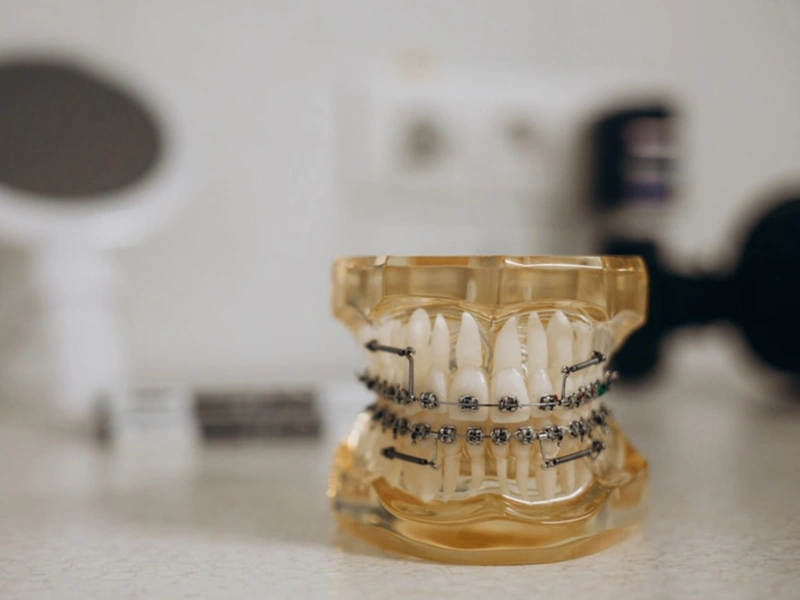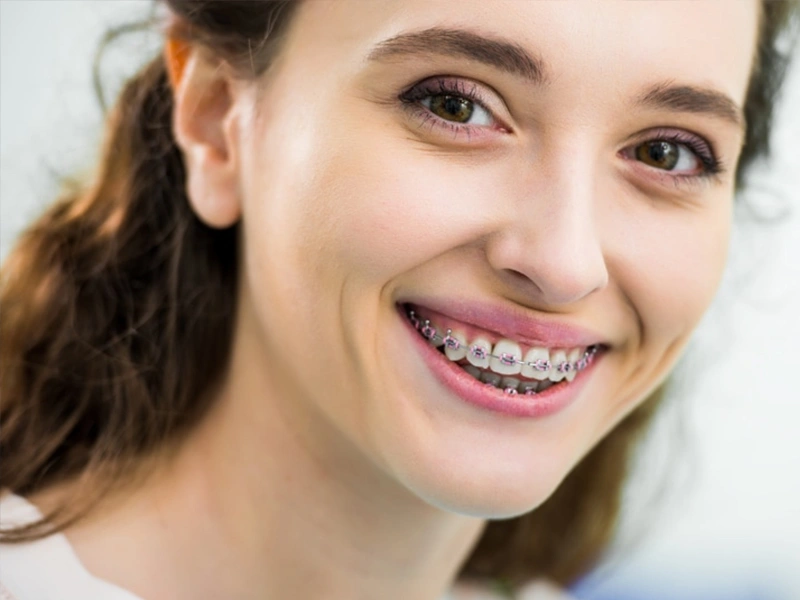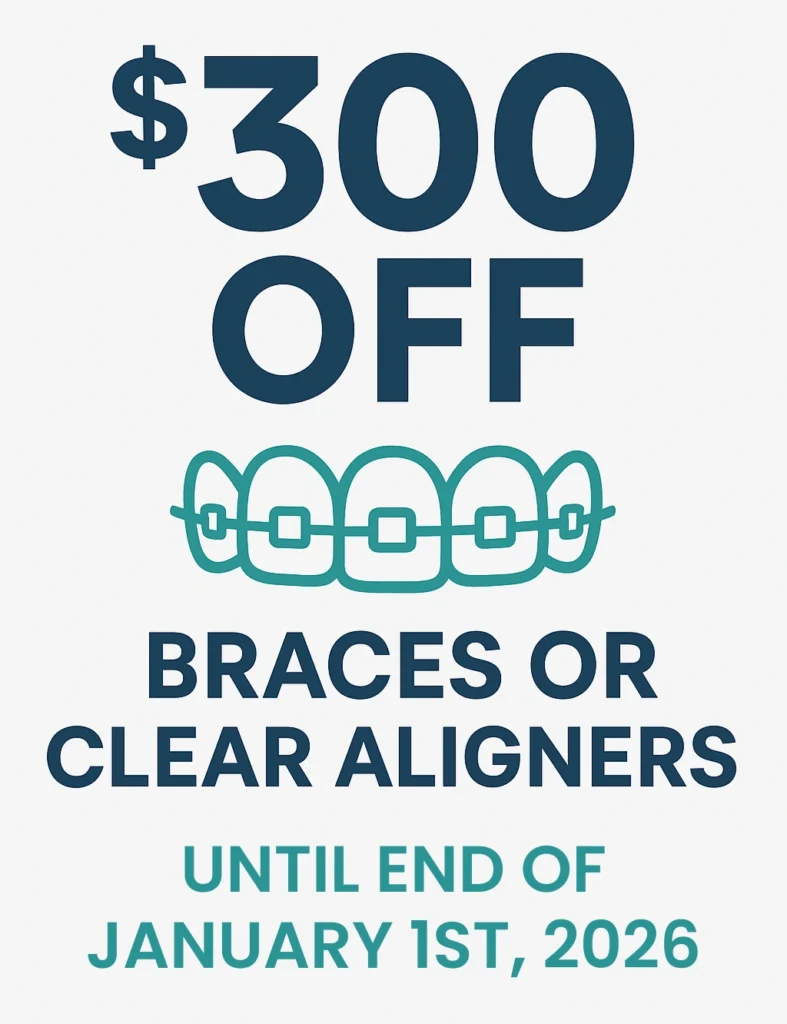REFER A FRIEND: GIVE $50, GET $50
Comprehensive Metal Braces Treatment

What Are Metal Braces Made of?

Effective Metal Braces
At The Woodlands Dentistry and Orthodontics, we continue to offer metal braces as an option for patients of all ages. Modern advancements have made these braces smaller, more comfortable, and aesthetically appealing, while maintaining their power and effectiveness. Metal braces are particularly useful for complex cases and are an excellent option for patients in The Woodlands, TX who need more intensive treatment.
In addition to their effectiveness, metal braces can also speed up the process of closing gaps and aligning teeth. This can potentially shorten treatment time compared to other methods. These braces are also cost-effective, as they don’t require the advanced technology or equipment needed for newer treatments.
Components of Metal Braces
Brackets
The brackets used in metal braces are made of a durable mix of stainless steel, nickel, and other metals. These brackets are bonded to the front of your teeth and connect to one another with an archwire, which guides your teeth into their desired position.
Glue
To securely attach the brackets, a dental adhesive is used to bond them to the surface of your teeth.
Wire
The wire is a thin piece of metal that runs between the brackets. It’s adjusted to apply the necessary pressure to shift the teeth into the correct alignment. The wire connects the teeth either on the upper or lower jaw, and may sometimes be adjusted to connect only specific teeth depending on your treatment plan.
Spacers
Spacers, or small elastic “donuts,” are used to create space between your teeth, typically before placing bands. These separators are placed between teeth to make room for appliances or for additional treatment steps.
Elastics
If bite correction is necessary, elastics are used to align the upper and lower jaws properly. These rubber bands are usually stretched between hooks on the brackets, creating the necessary force to correct overbites or underbites.
Orthodontic Bands
Orthodontic bands are stainless steel rings cemented to your teeth. They serve as an anchor for braces and other appliances. These bands are not necessary for all patients, and whether they are used will depend on your specific treatment plan.
Elastic Ties/o-rings/ligatures
Elastic ties are small rubber bands that secure the archwire to the brackets. These can come in a variety of colors, adding a fun touch to your orthodontic treatment, while also serving a functional role in your alignment process.
Frequently Asked Questions
Before starting your treatment, Dr. Phan and Dr. Salahuddin at The Woodlands Dentistry and Orthodontics will take detailed X-rays and images of your teeth and gums. We use the advanced iTero Element scanner, which takes just 10-15 minutes to create an accurate, 3D map of your mouth, eliminating the need for messy traditional impressions.
With this information, Dr. Phan and Dr. Salahuddin will develop a personalized plan for your orthodontic treatment, targeting the precise movement needed for each tooth.
Based on your unique needs, the bracket placement will vary. For example, if some teeth need to be rotated or tilted, different placement and adjustment techniques will be used.
Once the brackets are in place, Dr. Phan and Dr. Salahuddin will secure the wire, carefully bending it to apply the right amount of pressure to shift your teeth into their optimal positions gradually.




